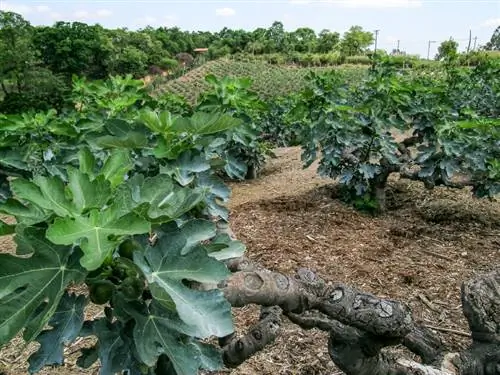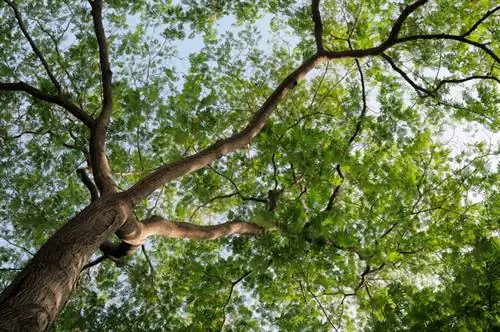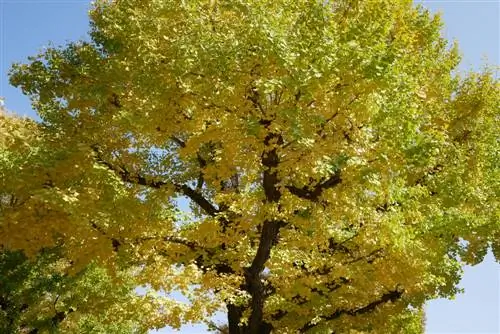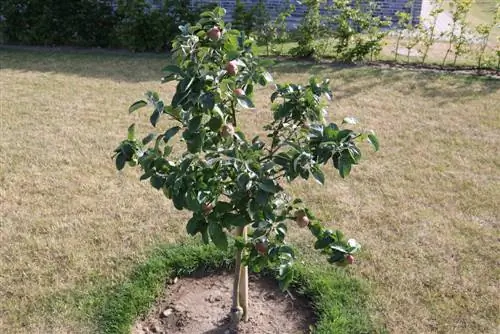- Author admin [email protected].
- Public 2023-12-16 16:46.
- Last modified 2025-01-23 11:20.
The natural home of the fig is the Orient, where the fig, which belongs to the mulberry family, has been cultivated for thousands of years. Its fruits were considered medicinal in ancient Egypt and Romulus and Remus were nursed under a fig tree. In the Mediterranean region, the fig has gone wild and grows almost everywhere. In regions with a mild climate, for example in the wine-growing regions, the fig also thrives north of the Alps. Its growth is slowed here due to the cool winters and it only bears fruit once a year.
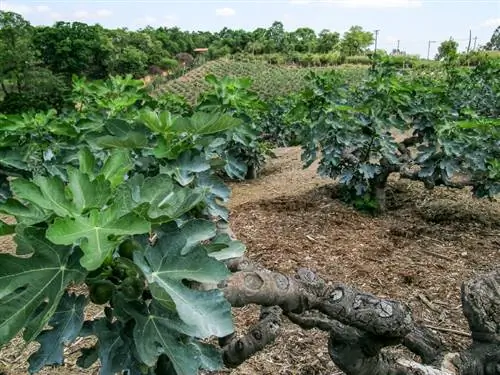
How big does a fig tree get?
The size of a fig tree varies depending on location and age. In their home countries, fig trees reach a height of 3 to 10 meters. In home gardens with harsher winters, they grow over 3 meters in favorable locations and can reach up to 5 meters high and wide in good conditions.
Widely spreading crown
The fig forms a broad branch structure and initially grows as a small shrub, in later years as a tree with a short, squat trunk. In its home countries it reaches a height of three to ten meters. In older figs, the crown is wide and about as wide as the fig is tall. The bizarrely shaped trunk is characteristic of these trees, which can live up to 90 years. Gnarled and twisted, it gives the tree a fascinating look.
Fig trees: attractive decoration for small gardens
In our home gardens, due to the harsh winters, fig trees only reach a height of over three meters in favorable locations. If the fig feels comfortable in its place and doesn't freeze back much due to frost, it can easily grow up to five meters high and wide.
Beautifully shaped leaves
The firm and leathery-hard leaves of the fig reach a length and width of up to thirty centimeters. Their three to five lobes make them resemble a hand in shape. The top is dark green and covered with a hairy pile. The underside is significantly lighter and only has fine hairs on the leaf veins.
Regular cutting slows growth
Since figs are very easy to cut, they can also be grown in small gardens or in a limited backyard. By cutting you can create open bushes or small trees that fit well into the garden in terms of shape and size. Alternatively, the fig can be grown as an espalier fruit. With good care and regular topiary, it grows over entire house walls and decorates.
Tips & Tricks
Figs in pots grow much slower. To slow down the sprawling growth of a fig, you can plant it in small gardens together with the pot (€75.00 on Amazon).

